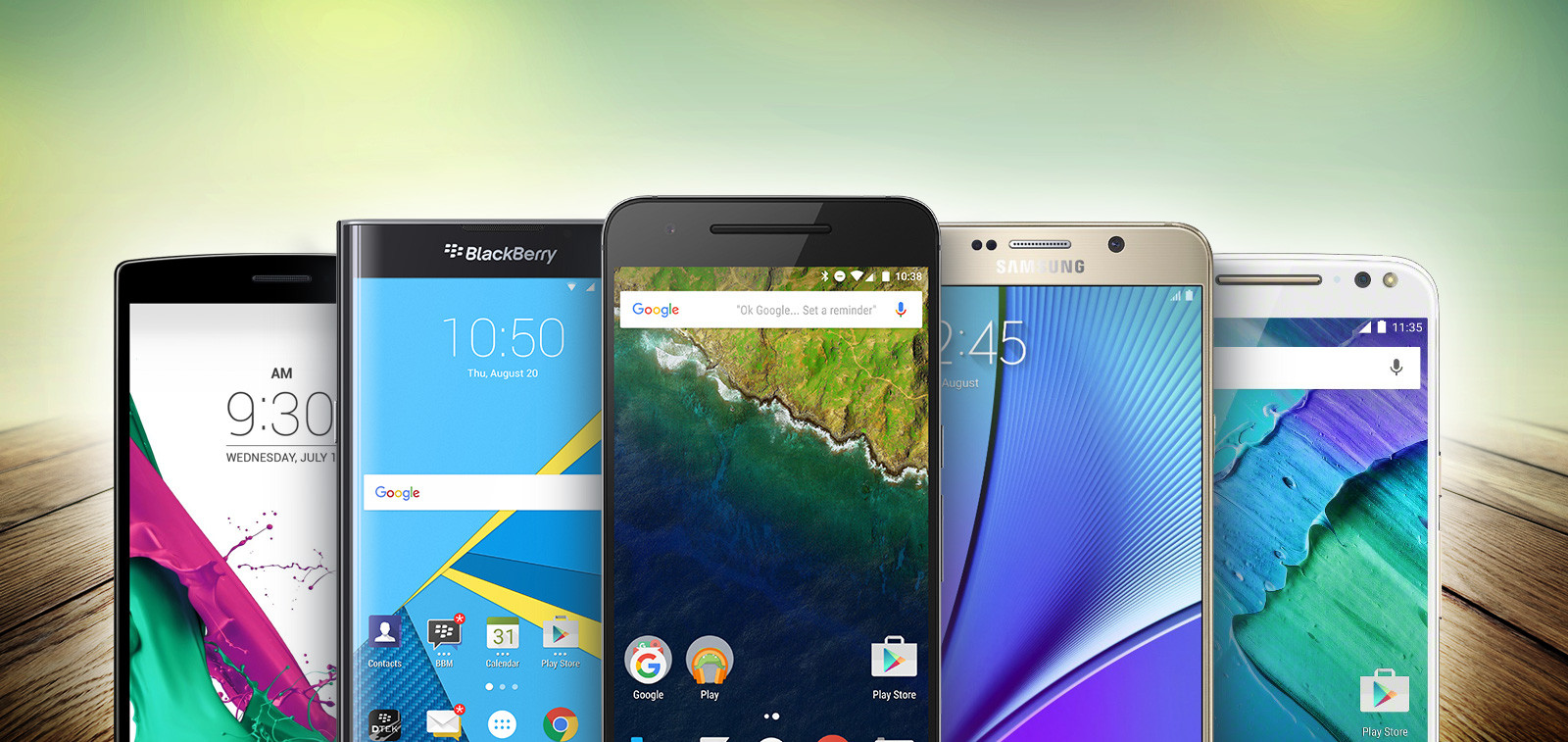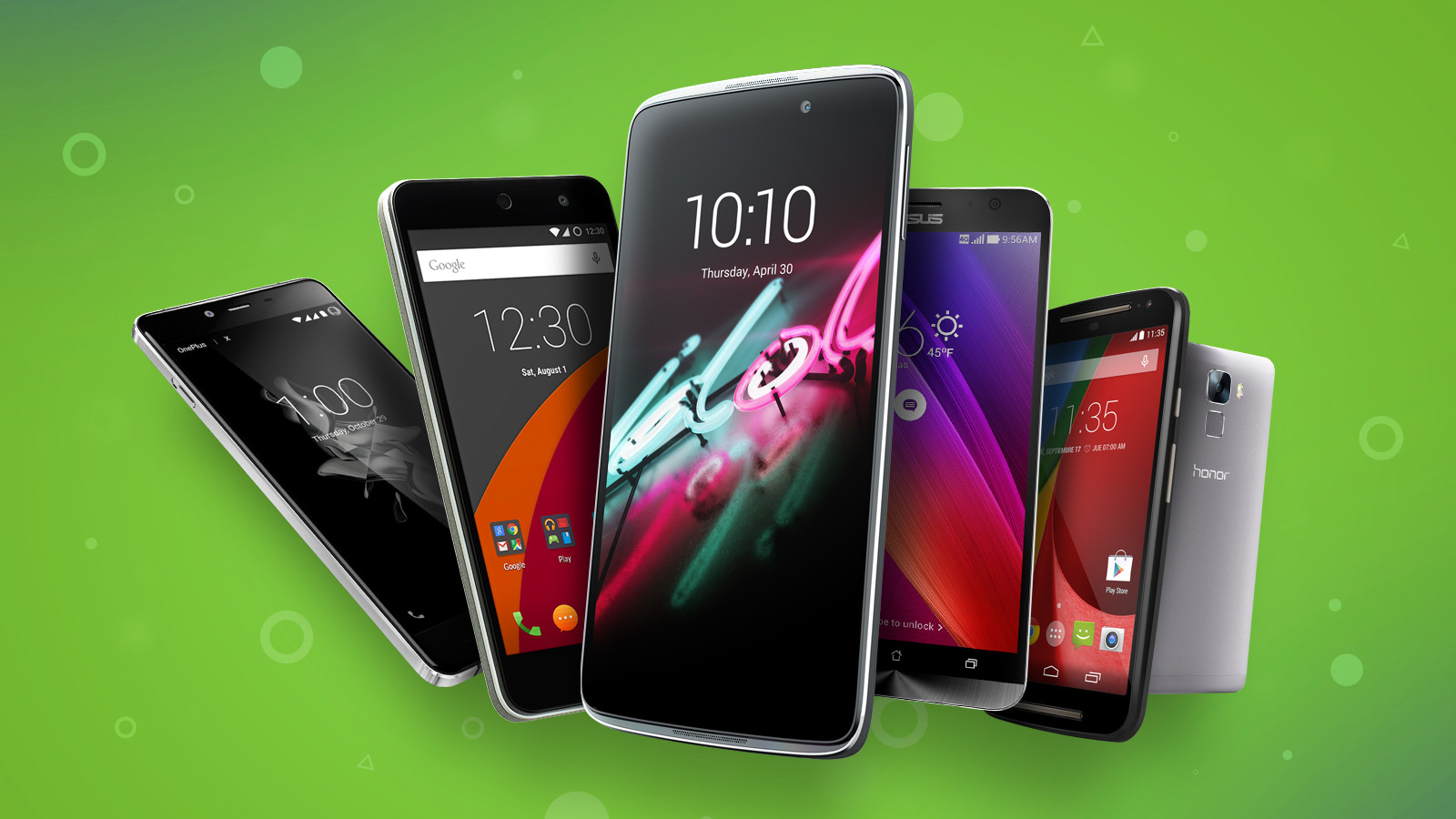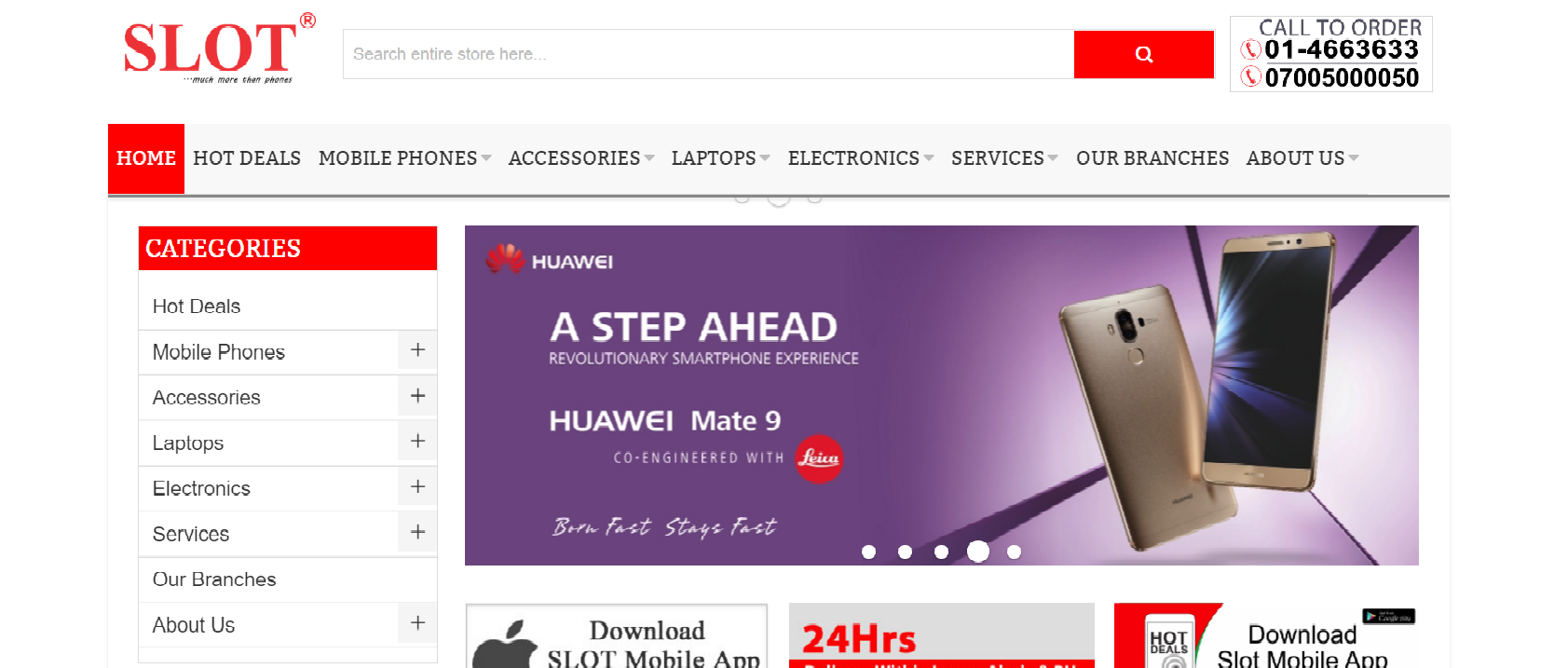Looking for a new smartphone? There are dozens upon dozens of great options on the market today, but finding the best of the best can be a bit difficult. We’ve seen some great launches over the past year and more should be coming soon too, so let’s take a look at the best Android phones you can buy as of June 2018.
The Best Android Phones You Can Buy In 2018
OnePlus 6
The OnePlus 6 is one of the best Android phones out there. OnePlus hasn’t pulled its punches at all. At the core is a Snapdragon 845 paired with either 6GB or 8GB of RAM, as well as 64GB, 128GB, or 256GB of storage. It’s a pretty killer package that runs Android Oreo with Oxygen OS without breaking a sweat.
The OnePlus 6 also offers a 6.28-inch 1080p OLED display with pretty minimal bezels, but also a notch at the top. Regardless of where you stand on the notch, the OnePlus 6 has one of the best looking displays available on an Android device today.
You’ll also get a dual-camera setup on the back of the OnePlus 6 with a 12MP primary sensor and 20MP secondary sensor which is used to improve Portrait Mode. The front-facing camera is a 16MP sensor.
Rounding things out, the OnePlus 6 offers a 3,300 mAh battery with Dash Charge, water resistance (with no IP rating), a rear fingerprint sensor and Face Unlock, and a headphone jack.
HTC U12+
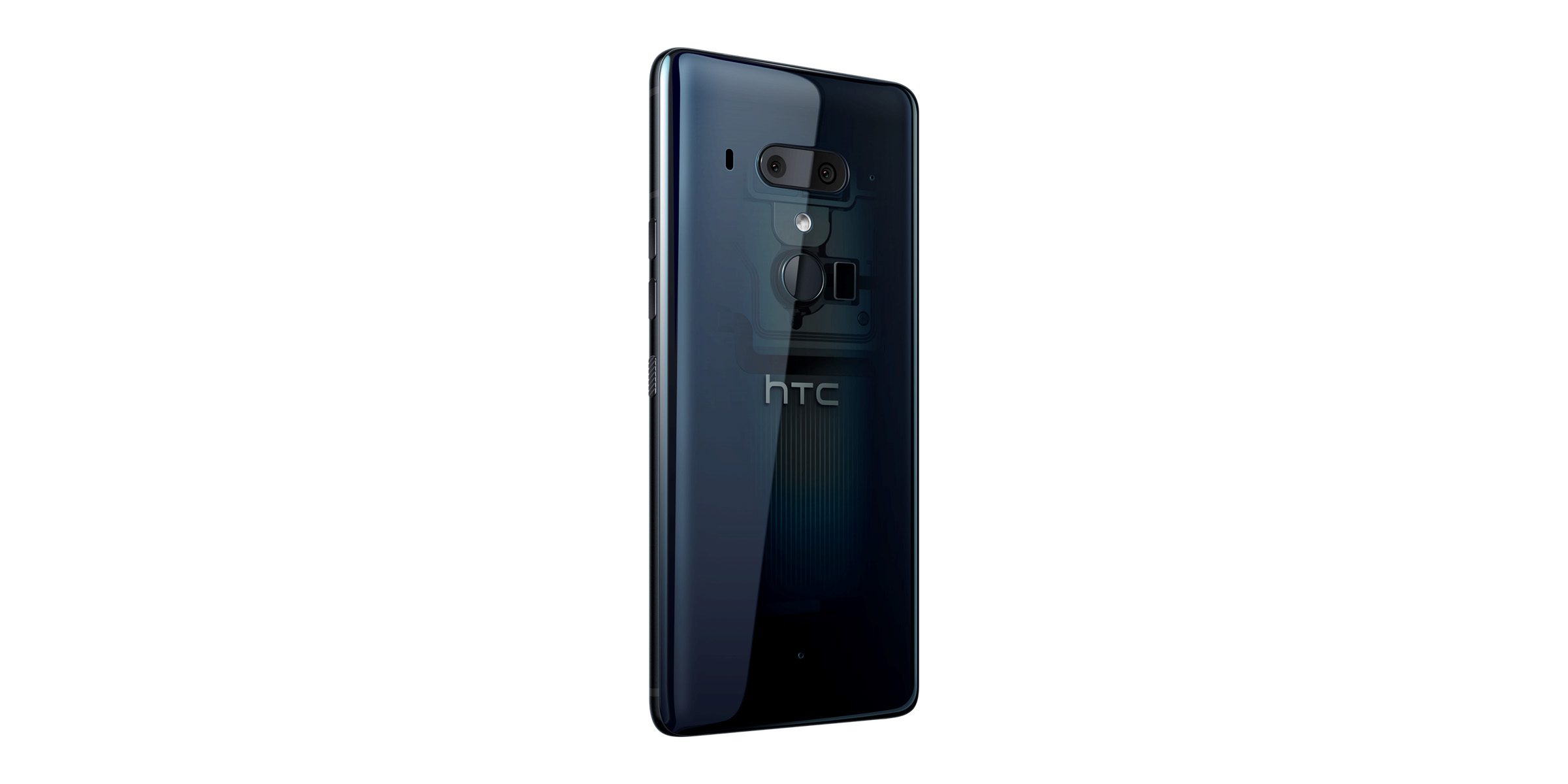
HTC has been an underdog for the past few years without too much success, but the company hopes to turn that around with the arrival of its new HTC U12+. This Android flagship is designed to compete right up there with the big dogs, and it admittedly brings a lot to the table.
The HTC U12+ is powered by a Snapdragon 845 processor paired with 6GB of RAM and 64GB or 128GB of storage. There’s also a microSD slot, IP68 dust/water resistance, and Android Oreo out of the box with a promised Android P upgrade. HTC has also packed in a 3,500 mAh battery, Bluetooth 5.0, and USB-C for charging and wired audio.
As for the display, there’s a 6-inch QHD Super6 LCD display here which supports HDR10, is covered by Gorilla Glass 3, and offers much slimmer bezels compared to HTC’s past devices. There’s no notched panel or curved corners, which is refreshing to see with so many other devices jumping onto those trends. Those slimmer bezels do push the fingerprint sensor to the back, but HTC has also included facial recognition.
One area of note on the HTC U12+ is the camera department. This device packs, not two, not three, but four different cameras. The rear setup consists of a primary 12MP sensor which uses the company’s UltraPixel technology, while the secondary sensor is used for depth tracking for Portrait Mode. On the front there are two more cameras which are dual-8MP sensors simply used for a wider angle and extra effects in selfies.
Sony Xperia XZ2/Compact
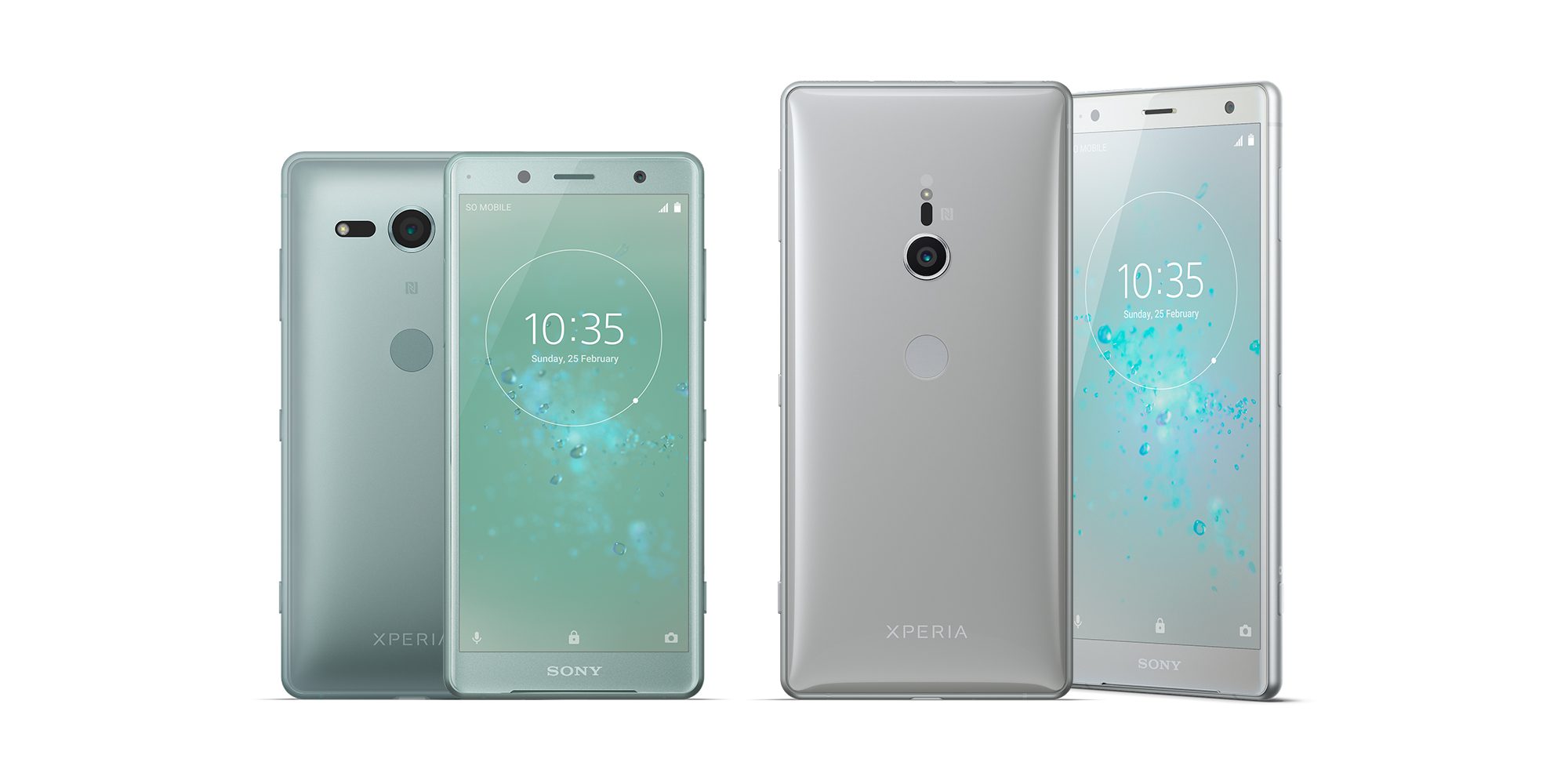
Sony’s Xperia smartphones don’t get much love in the United States, but they’re still solid Android smartphones. For 2018, the company’s big release is the Xperia XZ2 and Xperia XZ2 Compact, both on sale now.
These two smartphones have seen Sony’s biggest design changes in years. Gone are the overly massive bezels and blocky designs, exchanged for curvy designs that even incorporate glass on the larger device.
As for specs, the larger Xperia XZ2 brings a 5.7-inch 18:9 LCD display to the table, packing a 3,180mAh battery. On the smaller Compact, you’ll get a 5-inch 18:9 LCD display, with a 2,870mAh battery. Under the hood, specs are similar with the Snapdragon 845, 4GB of RAM, 64GB of storage, and Android Oreo powering both devices. You can even install the Android P beta on the larger XZ2.
Samsung Galaxy S9/S9+
Like most other years, the headlining Android phone of 2018 is from Samsung. The Galaxy S9 and S9+ made their debut at MWC 2018, and they’re both fantastic phones, despite not being all that different from their predecessors. To that end, the best way to describe the hardware is that it’s basically identical, but a bit more durable.
Under the hood, the Galaxy S9 and S9+ both pack a Snapdragon 845 processor, the latest and greatest for Android devices, along with 64GB of storage. Both devices are water-resistant and offer OLED displays. For the smaller phone, there’s a 5.8-inch display and 6.2 inches on the larger S9+. The smaller phone also offers 4GB of RAM, with 6GB on the larger device.
The headlining feature on the Galaxy S9 family, though, is the cameras. While the dual-camera array is exclusive to the S9+, both devices offer Samsung’s variable aperture hardware and the improved software. Needless to say, these are some of the best cameras on the market today.
Google Pixel 2/Pixel 2 XL
If you are looking one of the best Android phones, The original Google Pixel was one of our favorite phones of last year, and this year, Google is stepping up its game in a big way. The Pixel 2 family differs from last year by introducing some pretty stark differences between the two phones, so let’s talk about them.
First, let’s discuss what these two devices share in common, and that’s their specifications. Both Pixel 2 devices pack a Snapdragon 835 processor, 4GB of RAM, 64 or 128GB of storage without a microSD slot, and USB-C for charging and audio (sadly, there are no headphone jacks here). Along with that, there’s IP67 dust and water resistance, front-facing stereo speakers on both units, and Android 8.0 Oreo with a brand new launcher.
Both devices also share the same spectacular cameras. According to Google, the new 12MP f/1.8 sensor is significantly better compared to last year’s sensor, and early results are brilliant. That’s partially thanks to the addition of OIS, and Google’s software skills are improved this year, leading to a portrait mode that works with just one camera on both the rear and front cameras.
Now, for the differences. On the Pixel 2, we’re looking at a 5-inch, OLED display with pretty significant bezels up top and at the bottom. The smaller Pixel is also available in three colors — Just Black, Clearly White, and Kinda Blue. As for the Pixel 2 XL, there’s a 6-inch 18:9 P-OLED display with slimmed down (but not totally gone) bezels all around. This one is available in two colors — Black and Black & White (aka Panda or Stormtrooper).
LG G7 ThinQ
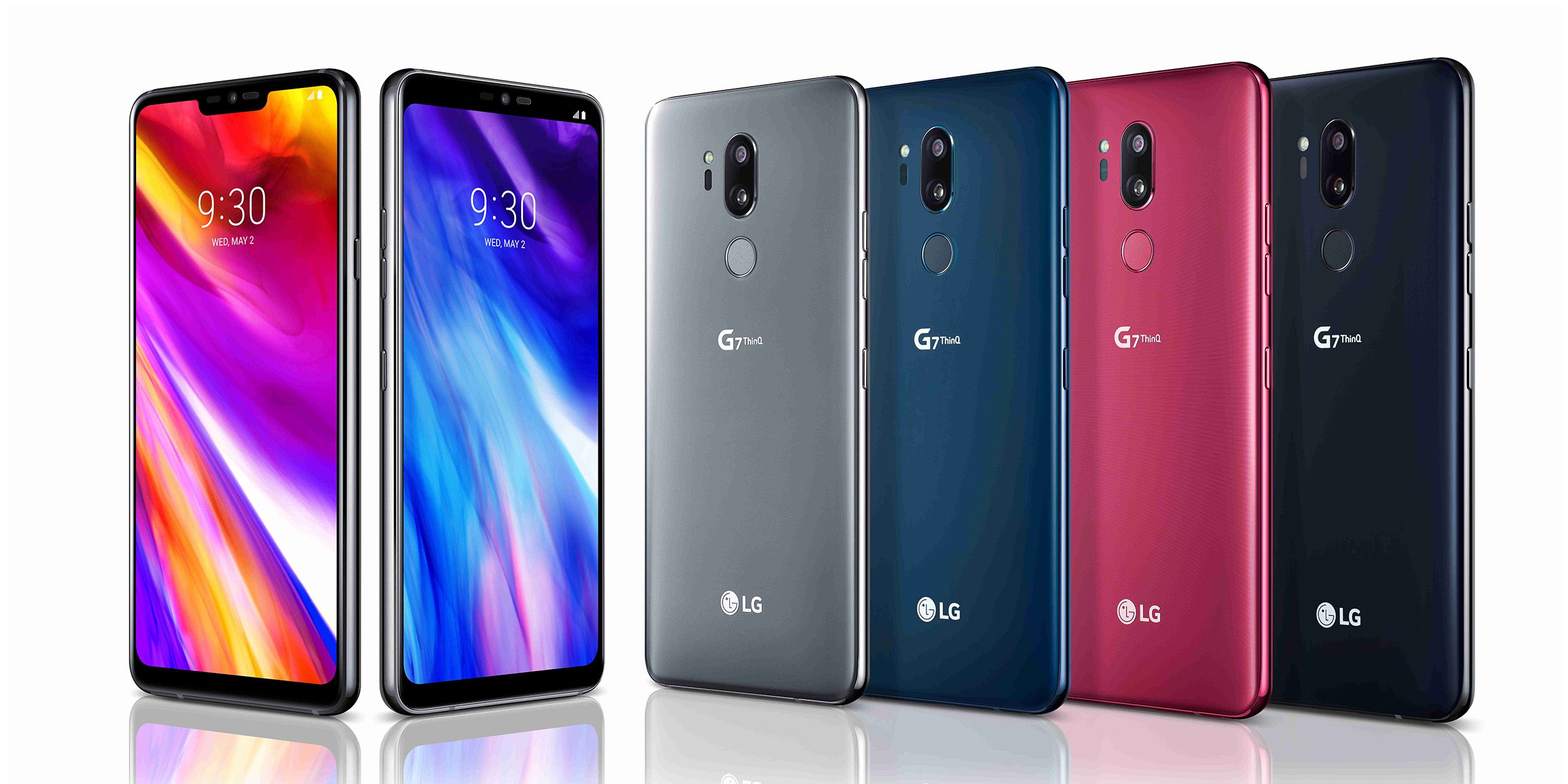
After delaying its launch, LG officially unveiled the LG G7 ThinQ recently. While it might not shake up the smartphone industry like some other recent releases, LG has a solid product here that should definitely be on your shortlist if you’re considering a new smartphone.
The LG G7 ThinQ, with its long name, packs a pretty run of the mill spec list for a 2018 flagship. Under the hood, you’ve got Qualcomm’s latest Snapdragon 845 chipset, 4GB of RAM, and 64GB of storage with Android Oreo on board. The phone offers up a glass/metal build, rear-facing fingerprint sensor, IP68 dust/water resistance, as well as a 3,000 mAh battery and both quick and wireless charging.
You’ll also get a 6.1-inch, 3120×1440 LCD display on the G7. It is notched, but offers a special “Super Bright” mode which can max out the brightness at 1,000 nits for a few minutes for better viewing outdoors.
LG has also kept the headphone jack around on the G7 ThinQ, even upping the ante with a 32-bit Quad DAC just like in its V30. Another highlight of the phone is its “Boombox” speaker which is one of the loudest you can get on a smartphone today.
As usual, LG has also tossed in quite a few extra software features on the G7 ThinQ, this time primarily around AI. There are a lot of special camera modes that react to what the AI can recognise, and you can even launch the Google Assistant and Google Lens through a dedicated hardware button.
Samsung Galaxy Note 8
Samsung’s follow-up to the disastrous Note 7 brings back a lot of features from that popular phone, as well as introducing a new design and the biggest display ever on a Note device.
The Galaxy Note 8 brings, as you’d expect, a ton of specs and features to the table. Up front you’ve got a 6.3-inch AMOLED display at 2960×1440 which is actually the brightest display ever on a smartphone, according to DisplayMate. Around back there’s also Samsung’s new dual-camera system with its optical zoom and portrait mode effects, as well as a fingerprint sensor and heart rate sensor.
Under the hood, we’re looking at a Snapdragon 835 chipset, 6GB of RAM, 64GB of storage, and Android Nougat out of the box. That also includes Samsung’s software skin which doesn’t really change all that much from the Galaxy S8. The notable difference here is the S-Pen.
Samsung’s infamous stylus returns in the Note 8 and it packs a few new features. It’s water-resistant just like the phone and features the same levels of sensitivity found with the Note 7, and it also adds some new software features. Screen-off memos now support up to 100 pages, and Samsung has also added “Live Messages” which lets you create fun GIFs with the S-Pen for your friends.
Huawei P20/P20 Pro
Huawei’s efforts in the US might be in trouble, but that’s not going to affect the company’s dominance in the worldwide smartphone market all that much. Back in March, the company announced its first 2018 flagships, the Huawei P20 and P20 Pro, and they’re both excellent offerings.
Both of these phones share similar, stunning designs with unique colors including the gorgeous Twilight. The metal and glass designs are very reminiscent of a certain Apple flagship, but they look great in their own way, and feel fantastic in person.
Under the hood, these phones share similar specifications. The base model Huawei P20 has a Kirin 970 chipset, 4GB of RAM, up to 128GB of storage, and Android Oreo based on 8.1 out of the box. Similarly, the P20 Pro offers that same Kirin 970 and Android 8.1, but with 6GB of RAM and up to 256GB of storage. Huawei’s EMUI 8.1 is also on board over Oreo.
The phones also differ slightly in size, with the P20 offering a 5.8-inch LCD display and the P20 Pro packing a 6.1-inch AMOLED display. Both are FHD+ at an 18.7:9 aspect ratio, and yes, they both have a notch.
The main story here, though, comes with the cameras. The standard P20 has a solid setup with a 12MP primary sensor and 20MP secondary monochrome sensor.
On the P20 Pro, though, you get the first triple camera setup on any smartphone. This setup consists of a 40MP primary sensor, 20MP monochrome sensor, and 8MP telephoto camera. That gives you incredible detail and 3x optical zoom, as well as a 5x hybrid zoom. For camera quality, this is a force to be reckoned with. Both phones have various cameras modes including full manual, as well as 960fps video recording.
LG V30
Another excellent option which launched last fall is the LG V30. While it might not get as much attention as the Note, LG has a serious winner on its hands here. The V30 is powered by the Snapdragon 835 processor, 4GB of RAM, and 64GB of storage with Nougat on board and LG’s skin. Not much has changed with the software outside of the addition of a “floating bar” for shortcuts, but with these specs under the hood, this phone runs well.
The V30 also packs LG’s first mainstream OLED display and it’s excellent. The 6-inch panel is sharp, has vibrant colors, and is very bright as well. The bezel-less design keeps the phone compact in the hand as well.
One of LG’s most notable features on the V30, though, is the dual-camera system around back. While the company’s standard and super wide-angle sensors are nothing particularly new, the record-setting f/1.6 aperture on the standard 16MP sensor and f/1.9 aperture on the wide-angle 13MP sensor nearly perfect the formula.
Huawei Mate 10 Pro
Despite a high price tag and the fact it won’t be sold through carrier channels, the Mate 10 Pro from Huawei is one of the best phones you can get today. The successor to the Mate 9 has a new design, improved specs, and catches up to the rest of the industry.
For its second US flagship, Huawei has gone all out. The new 6-inch OLED 18:9 display is sharp and clear with fantastic colors and viewing angles. Backing that up, you’ve got one of the best looking designs on a smartphone today. The glass rear looks fantastic across the board, somehow standing out in a sea of glass phones.
Under the hood, the Mate 10 Pro is powered by a Kirin 970 processor, 6GB of RAM, 128GB of storage, and Android Oreo on board out of the box.
As for cameras, Huawei is back with another dual-camera array once again built in collaboration with its partners from Leica. The f/1.6 aperture is impressive, and both stills and video look great.
Samsung Galaxy S8/Galaxy S8+
Samsung radically changed its design language in 2017, and that started with the Galaxy S8 and Galaxy S8+. The bezel-light phones usher in a new design language for Samsung with further revised software with new features like Bixby, and that influenced what we saw in the new Galaxy S9.
The Galaxy S8 is a 5.8-inch device where the S8+ is a 6.2-inch monster, or at least, it would be without this design. Thanks to the thin bezels all around, the S8 and S8+ are both very compact compared to devices with similar or even smaller screen sizes. It’s impressive both in pictures and in person.
Under the hood, the Galaxy S8 packs the Snapdragon 835, 4GB of RAM, 64GB of storage, and a microSD card slot. There’s also USB-C for quick charging and data transfer, as well as video output via Samsung’s DeX dock which offers up a full desktop environment when plugged into the necessary peripherals. The S8 also packs Nougat out the box with a cleaner software build.
Why buy the Galaxy S8 over the S9? Aside from some question design decisions, like the fingerprint sensor, and a not quite as good camera, there’s not much reason to fork over the extra cash for Samsung’s newer device.
